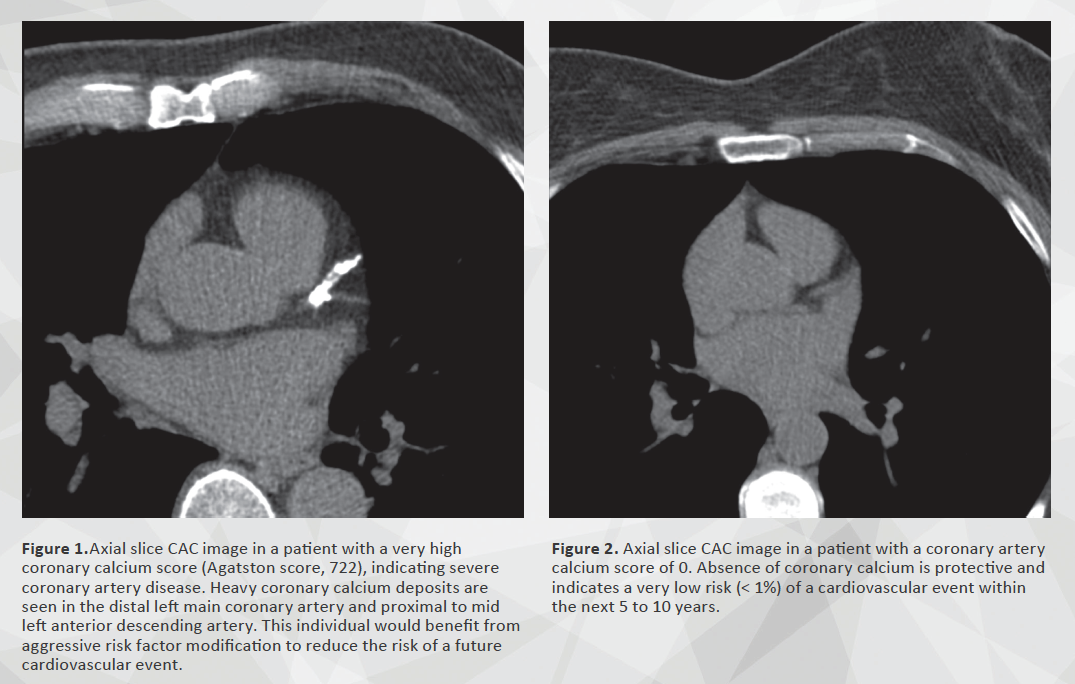Doc, am I going to have a heart attack? This is one of the most common questions that patients ask in my office. The truth is, I have no way of predicting the future. They could have a heart attack at any time for all I know. I empathize with their worries, but once I have optimized their risk factors I am often stuck telling them something along the lines of, Well, I don't have a Magic 8 Ball, but as far as I can tell, you're doing just fine. Although no test can predict the future, the coronary artery calcium scan (CACS) is near the front of the pack in this regard. Why? Because a coronary artery calcium score outperforms all other risk factors used today in predicting future cardiovascular events.
CACS has a lot going for it. Besides being a strong independent predictor of heart attacks, the test is well-proven, highly specific, relevant and delivers actionable findings for clinical use. Add to this no need for patient preparation or IV contrast dye, low cost ($50-$100/test out-of-pocket without insurance), a well-validated scoring system and low radiation exposure—circa 1 mSv, approximating that of a mammogram—and coronary calcium scoring becomes a no-brainer.
Clinically it’s a winner, so it’s no surprise that the latest American College of Cardiology/American Heart Association practice guideline on managing cholesterol added a class IIA recommendation to include CAC testing for intermediate-risk individuals who have an uncertain need for primary prevention statin therapy (J Am Coll Cardiol, online Nov. 8, 2018). Though CACS was already widely used, its formal inclusion in the guideline will likely increase its use in cardiovascular and primary care practices nationally.
CACS has the potential to help enrich your service line with patients who really benefit from specialist evaluation as well as strengthen your pipeline of referrals—two essentials for the health of your practice. Here’s how.
Used correctly, CACS can improve patient outcomes without adding prohibitive cost. As we move toward value-based care, outcomes are the name of the game. Checking a coronary calcium scan allows physicians to more readily identify individuals who will benefit from statin therapy. Early CAD diagnosis—a non-zero calcium score—often allows for a remarkable gain in lead-time (length of time from CAD detection to event: myocardial infarction or angina). Practicing cardiologists and primary care physicians can leverage the power of lead-time to invoke more aggressive risk-factor modification, which reduces future cardiovascular events.
A critical factor affecting outcomes is patient compliance with medical therapy, a significant challenge physicians face, particularly with statins. To this end, images of calcium in a patient’s own heart vessels provide a compelling visual cue, one that encourages initially nonadherent patients to comply with statin therapy (see figure 1 below). Greater statin adherence naturally confers improved patient outcomes.
CACS also allows physicians to consider withholding statin treatment in patients who have a score of 0. Considering that approximately 1 of 5 patients would rather trade away healthy life days to avoid taking statins (or other preventive medications), avoiding therapy in especially low-risk patients who have a CACS of 0 may represent a cost-effective quality of life enhancer (see figure 2 below).

CACS can enrich your referrals base, the lifeline of cardiovascular practices. By correctly reclassifying approximately one-half to two-thirds of intermediate-risk individuals, CACS enables programs to enrich their referral base and in-office visits with individuals who have newly established CAD and an overall greater burden of cardiovascular events. These are people who often benefit from a formal cardiology evaluation.
Along these lines, it is important for cardiologists to actively engage and educate primary care physicians on the utility of CACS and its potential to reduce cardiac events among primary prevention individuals.
In addition, it is not uncommon to find incidental thoracic aortic aneurysms on calcium scans. While not a chest computed tomography angiography study, aortic enlargement on a CACS is readily appreciated. Having a cardiologist carefully review the CAC scan allows for expeditious identification of incidental thoracic aortic aneurysms, which can be life-saving. This creates the potential to further grow your service line by strengthening the aortic disease program, which is too often under-emphasized in cardiology practices.
CACS sets the stage for healthy downstream program growth. National CMS data reveal that hospitals lose many thousands of dollars per myocardial infarction admission, with Medicare payments significantly underpaying relative to hospital burden (by up to sevenfold less than hospital costs in some states). Thus, every saved cardiovascular event is a major cost-savings to your hospital system and service line. Leveraging the lead-time provided by CAC testing is a robust strategy to reduce cardiovascular events for the patients in your system.
Modestly elevated CAC scores (Agatston, 1-100) confer a three- to fourfold increase in the risk of cardiovascular events, which jumps up even further to seven- to tenfold with scores exceeding 300—this is significant. As the calcium score increases, so does the likelihood of death and flow-limiting coronary lesions. Knowing that ischemia is present in approximately 20 percent of people with a CACS of 100 to 399 and in 30 to 40 percent of individuals with a score of 400 or more, physicians typically develop a low threshold to proceed with stress testing in individuals believed to potentially have symptoms representing an anginal equivalent. In this regard, offering coronary calcium testing in a hospital system readily factors into maintaining a strong pipeline of appropriate, high-yield stress tests that have impactful results for high-risk patients.
A better message for patients
CACS is a win-win in that it provides strong clinical value that improves patient outcomes and quality of life while also being cost-effective. While it may fall short of the Magic 8 Ball, CACS enables physicians to provide some peace of mind to worried patients and their families, with actionable results. Today, when patients ask if they’re going to have a heart attack, I recommend a coronary calcium scan. For $50, five minutes and radiation exposure approximating that from living in a big city for three months (minimal), coronary calcium testing demonstrates a uniquely robust return on investment. After all, as Sir Francis Bacon is commonly attributed as saying, scientia potentia est—knowledge is power.
Vimal Ramjee, MD, is a senior staff cardiologist at the Chattanooga Heart Institute (Memorial Hospital) in Tennessee. He is board-certified in cardiovascular disease (cardiology), echocardiography, nuclear medicine, cardiac CT and internal medicine. He specializes in structural and interventional imaging.
